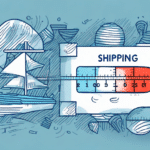Introduction to FedEx's Dimensional Weight Pricing
When shipping packages with FedEx, you might notice that the cost isn't determined solely by the actual weight of your shipment. Instead, FedEx employs a pricing method known as dimensional weight pricing, which considers the size and volume of your package. This approach ensures that shipping costs reflect the space a package occupies during transit, allowing for more efficient use of transportation resources. In this article, we'll delve into the details of the FedEx Dimensional Weight Formula, how it operates, and strategies to optimize your packaging to minimize shipping expenses.
Understanding the FedEx Dimensional Weight Formula
The FedEx Dimensional Weight Formula is a pricing strategy that calculates shipping costs based on both the size and actual weight of a package. This method ensures that larger, lighter packages are appropriately priced according to the space they consume on delivery vehicles.
The formula is straightforward:
Dimensional Weight (lbs) = (Length × Width × Height) ÷ Dimensional Weight Divisor
FedEx determines the dimensional weight divisor based on industry standards, which currently stands at 166 for domestic shipments in the United States. The calculated dimensional weight is then compared to the package's actual weight, and the higher value is used to determine the shipping cost.
Benefits of Dimensional Weight Pricing
Dimensional weight pricing offers several advantages for both the shipping company and the customer:
- Encourages Efficient Packaging: Shippers are motivated to use appropriately sized packaging, reducing unnecessary bulk and material usage.
- Maximizes Transportation Efficiency: By accounting for package volume, FedEx can optimize space utilization on trucks and planes, leading to fewer trips and lower environmental impact.
- Fair Pricing: Ensures that larger packages, which take up more space, are priced in a manner that reflects their impact on shipping resources.
Factors Influencing Dimensional Weight
Several key factors affect the dimensional weight of a package:
- Package Dimensions: Larger packages inherently have higher dimensional weights.
- Weight-to-Size Ratio: Packages that are large but lightweight will have higher dimensional weights compared to smaller, heavier packages.
- Dimensional Weight Divisor: The divisor set by FedEx influences how dimensions translate into cost; a lower divisor results in higher dimensional weights.
Calculating Dimensional Weight: A Step-by-Step Guide
To accurately calculate the dimensional weight of your package, follow these steps:
- Measure Your Package: Determine the length, width, and height of your package in inches.
- Apply the Formula: Multiply the length, width, and height, then divide by the dimensional weight divisor (166 for domestic shipments).
- Compare Weights: Determine whether the dimensional weight or the actual weight is higher.
- Determine Shipping Cost: FedEx will use the higher of the two weights to calculate the shipping fee.
For example, a package measuring 20" × 15" × 10" would have a dimensional weight of:
(20 × 15 × 10) ÷ 166 = 18.07 lbs
Strategies to Reduce Shipping Costs
By optimizing your packaging, you can lower the dimensional weight of your shipments and reduce shipping costs:
- Use the Right Size Box: Choose a box that fits your product snugly to minimize excess space.
- Lightweight Packaging Materials: Opt for materials like cardboard or paper instead of heavier alternatives.
- Custom Packaging Solutions: Tailor packaging to the specific dimensions of your product to avoid unnecessary bulk.
- Remove Excess Padding: Only use as much padding as necessary to protect your items.
- Compressible Materials: Utilize packing materials that can compress during transit to reduce size.
Comparing Dimensional Weight Across Shipping Carriers
While FedEx uses a dimensional weight divisor of 166 for domestic shipments, other carriers may have different divisors or calculation methods. For instance:
- UPS: Uses a divisor of 139 in the US.
- DHL: Varies by region and service type.
It's crucial to compare these metrics when selecting a shipping carrier to ensure you're getting the most cost-effective option for your needs. Visit the respective carrier websites for the most current information:
Frequently Asked Questions About FedEx's Dimensional Weight Formula
- What is the dimensional weight divisor for pounds?
The dimensional weight divisor for pounds in the United States is 166. - How do I calculate the dimensional weight of my package?
Measure the length, width, and height in inches, multiply these values, and then divide by the divisor (166 for US domestic shipments). - Can I be charged based on dimensional weight?
Yes, FedEx charges based on whichever is higher: the actual weight or the dimensional weight. - How can I reduce dimensional weight charges?
Optimize your packaging by using appropriately sized boxes, lightweight materials, and minimizing excess space.
Optimizing Packaging to Minimize Dimensional Weight Charges
Effective packaging optimization involves several strategies to ensure your packages are both protected and efficient:
- Select the Right Box Size: Avoid oversized boxes that increase dimensional weight.
- Use Lightweight Materials: Choose packaging materials that offer protection without adding significant weight.
- Customize Packaging: Develop packaging solutions tailored to your product's shape and size.
- Reduce Empty Space: Use fillers that take up minimal space or are compressible.
- Regularly Assess Packaging Needs: Continuously evaluate and adjust your packaging methods based on shipping data and product changes.
Current Status of FedEx's Dimensional Weight Formula
As of October 2023, FedEx has updated its dimensional weight divisor to 139 for both domestic and international shipments, aligning with industry standards. This change means that packages must be denser to avoid higher dimensional weight charges. Shippers should reassess their packaging strategies to comply with the new divisor and optimize shipping costs effectively.
Conclusion
Understanding and effectively utilizing FedEx's Dimensional Weight Formula can lead to significant savings and more efficient shipping operations. By staying informed about current divisors, optimizing your packaging, and comparing carriers, you can ensure that your shipping costs remain manageable while maintaining service quality.




















